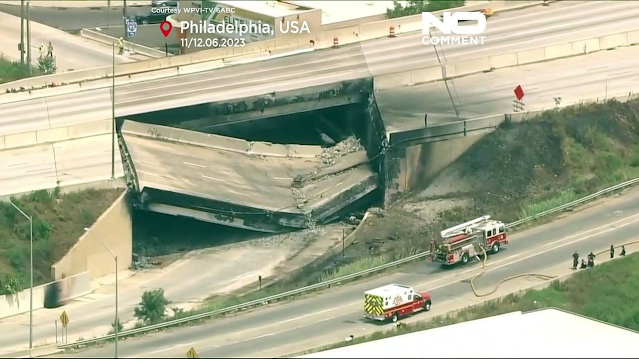In recent years, the United States has witnessed a series of bridge collapses that have raised serious concerns about the state of the nation's infrastructure. From Minneapolis' I-35W bridge collapse in 2007 to the more recent incidents in Florida and Tennessee, these tragic events serve as stark reminders of the urgent need for increased infrastructure spending. As the backbone of a thriving economy, well-maintained bridges are crucial for transportation, trade, and public safety. This article delves into the reasons behind these bridge collapses and highlights the importance of prioritizing infrastructure investments.
One key factor contributing to the bridge collapses in the United States is the aging infrastructure. Many bridges were constructed several decades ago, with a significant number exceeding their intended lifespan. Over time, exposure to harsh weather conditions, heavy traffic loads, and limited maintenance resources have taken a toll on their structural integrity. Neglected infrastructure can develop hidden vulnerabilities, leading to catastrophic failures. To prevent further tragedies, it is imperative to address the aging infrastructure through extensive repairs, retrofitting, or complete replacement.
Another critical issue is the insufficient maintenance and inspection of bridges. Due to budget constraints, many states and municipalities struggle to allocate adequate funds for regular inspections and timely repairs. As a result, potential signs of structural weaknesses can go unnoticed, increasing the risk of collapses. Additionally, the lack of standardized inspection protocols across states further compounds the problem. Increasing investments in regular inspections, employing advanced monitoring technologies, and enhancing training for inspectors are crucial steps toward ensuring the safety and resilience of the nation's bridges.
The United States experiences a constant growth in traffic volume, exerting substantial strain on its bridges. Many bridges were originally designed to accommodate lower traffic loads, and the steady increase in vehicle weights and volumes over the years has surpassed their capacity. Heavy traffic, especially from commercial trucks, accelerates wear and tear on bridge components, leading to structural degradation. Investing in bridge replacements or widening projects to cater to evolving traffic demands is vital to maintain a robust transportation network that can support economic growth.
Beyond public safety concerns, bridge collapses have far-reaching economic implications. Disruptions caused by bridge failures can impede the flow of goods, delay deliveries, and increase transportation costs. This not only affects businesses but also impacts consumers who may experience price hikes and limited access to goods. Inefficient transportation networks hinder economic productivity and competitiveness on a broader scale. Prioritizing infrastructure spending ensures the continuous operation of vital trade corridors, enabling businesses to thrive, fostering job creation, and bolstering economic resilience.
Increased infrastructure spending represents a tremendous opportunity to stimulate the economy and create jobs. Investing in bridge repairs, maintenance, and replacements generates employment across various sectors, from construction workers to engineers, architects, and manufacturers. Additionally, improving infrastructure boosts productivity and efficiency, attracting businesses and encouraging private sector investments. This virtuous cycle of economic growth and job creation strengthens the nation's overall prosperity.
The bridge collapses witnessed in the United States serve as a somber wake-up call, emphasizing the urgent need for infrastructure spending. Addressing aging infrastructure, improving maintenance practices, accommodating growing traffic demands, and mitigating economic risks are vital components of a comprehensive infrastructure agenda. By investing in our bridges and transportation networks, we not only ensure public safety but also lay the foundation for a resilient, competitive, and prosperous future. Timely action and increased funding are imperative to prevent further tragedies, create jobs, and propel the nation towards a more sustainable and efficient infrastructure system.

